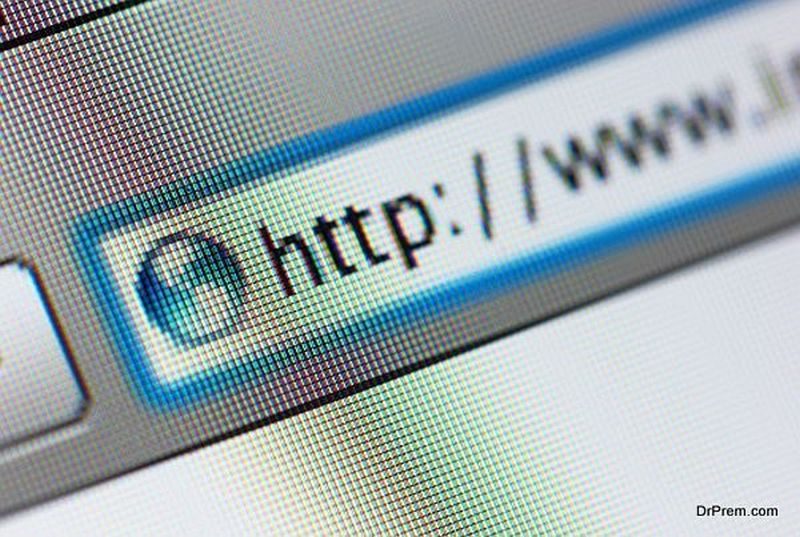Digitalization has led to many advances and helped share all kinds of information. Though the age of digitization should have been beneficial all strata of the population; in reality, the poorest sections of society are still deprived of it. The experts are calling this the ‘digital divide’. This divide is not only prevalent in developing countries, but also in first world, developed nations. Apart from the obvious economic divide, there are other divides too. Let’s take a look at them and also see if there are ways to bridge the digital divide:
Types of digital divide
Economic divide
 Many people simply cannot afford to buy computers. Though governments around the world have tried out many schemes, in developing countries, people just don’t have the money to spare for computers. Thus, one of the causes of the digital divide is purely economical. Even in developed countries, the economically backward cannot afford to buy computers. There could be a chance to buy a PC only after a few years, when computers become less costly.
Many people simply cannot afford to buy computers. Though governments around the world have tried out many schemes, in developing countries, people just don’t have the money to spare for computers. Thus, one of the causes of the digital divide is purely economical. Even in developed countries, the economically backward cannot afford to buy computers. There could be a chance to buy a PC only after a few years, when computers become less costly.
Literacy divide
 In order to find ways to bridge the digital divide, we have to analyze its causes. Worse than any economic divide is the highly complicated digital technology. Many people would not know how to use computers even if they received a free computer. Many services are very difficult to understand and very most of the websites are written in a language which requires one to be a graduate at least. Low literacy is therefore another of the causes of digital divide and it forms a huge user group.
In order to find ways to bridge the digital divide, we have to analyze its causes. Worse than any economic divide is the highly complicated digital technology. Many people would not know how to use computers even if they received a free computer. Many services are very difficult to understand and very most of the websites are written in a language which requires one to be a graduate at least. Low literacy is therefore another of the causes of digital divide and it forms a huge user group.
Senior citizens too have an accessibility problem, and a very small portion of websites cater to them. We have to find ways to bridge the digital divide and overcoming the complicated usage is one of the ways to do so.
Empowerment divide
 The empowerment divide is the one in which users do not utilize digital resources to the full capacity. Very few people are actually able to use the internet and computers to their benefit. For example, many people do not know how to get the most out of search engines. Hardly anybody ever uses advanced search features; many are content just to rely on the results which appear on the first page. On the other hand, developing their skill of the internet use, and suiting the home page, etc. according to their requirements will help them to use the power of the internet to their advantage.
The empowerment divide is the one in which users do not utilize digital resources to the full capacity. Very few people are actually able to use the internet and computers to their benefit. For example, many people do not know how to get the most out of search engines. Hardly anybody ever uses advanced search features; many are content just to rely on the results which appear on the first page. On the other hand, developing their skill of the internet use, and suiting the home page, etc. according to their requirements will help them to use the power of the internet to their advantage.
Effective ways to bridge the digital divide
Though the ‘digital divide’ is very much there, there are solutions to the digital divide. Here are some of them:
Using smartphones to narrow the divide
 The evolution of mobile phone technology has narrowed the digital divide in some parts of the world. In Kenya, especially in Mombasa and Nairobi, investment from the private sector as well as improved, superior infrastructure has led to Kenyans accessing digitalization. This has been possible due to accessibility to information technology and associated skills.
The evolution of mobile phone technology has narrowed the digital divide in some parts of the world. In Kenya, especially in Mombasa and Nairobi, investment from the private sector as well as improved, superior infrastructure has led to Kenyans accessing digitalization. This has been possible due to accessibility to information technology and associated skills.
Kenya can provide some answers as to how to solve the problem of digital divide. Now, students complete their homework online, and parents check their offspring’s progress on their mobiles, using software which is advanced even for the developed world.
Setting up the hardware
 The first thing is to give computers for free to children and adults, in villages and towns. This can be a government or private initiative. Non-governmental agencies can also help to reduce the digital divide. Many children and adults in developing countries have no access to computers, and have never even laid eyes on one. In countries like India, there are cheap, non-branded computers which have been developed just so that more people can afford them.
The first thing is to give computers for free to children and adults, in villages and towns. This can be a government or private initiative. Non-governmental agencies can also help to reduce the digital divide. Many children and adults in developing countries have no access to computers, and have never even laid eyes on one. In countries like India, there are cheap, non-branded computers which have been developed just so that more people can afford them.
Even a single desktop or laptop can be used for a number of students in batches, and they can be set up in schools.
But apart from computers, smartphones can be used for their benefit too. The challenge lies in developing educational apps. These apps for children and adults should be in the local language for them to understand and operate. This can be one of the solutions to the digital divide.
Educating the elders first
 How to solve the problem of digital divide is a serious question. First, the elders have to be educated, thus creating a generation of ‘digital elders’. In rural areas, the teachers themselves are not digitally aware. It’s the teachers which have to be made familiar with computers, so that they can get the best out of them. Only then, can they teach their wards also to be comfortable enough to bridge the gap. Teachers can be taught via online distance learning courses. They can also learn specific skills, such as how to counsel children with special needs, etc.
How to solve the problem of digital divide is a serious question. First, the elders have to be educated, thus creating a generation of ‘digital elders’. In rural areas, the teachers themselves are not digitally aware. It’s the teachers which have to be made familiar with computers, so that they can get the best out of them. Only then, can they teach their wards also to be comfortable enough to bridge the gap. Teachers can be taught via online distance learning courses. They can also learn specific skills, such as how to counsel children with special needs, etc.
Teachers and students can both learn programming languages which can help them further.
There are various interesting apps which can help the children and their teachers in doing so.
Arranging for a smooth internet connection
 It’s not enough to just provide the hardware and allow the computers to gather dust. One of the vital ways to bridge the digital divide is to provide a smooth internet connection. Here is where mobile data can come to use, as phones can be connected to laptops and computers, where traditional broadband networks do not reach.
It’s not enough to just provide the hardware and allow the computers to gather dust. One of the vital ways to bridge the digital divide is to provide a smooth internet connection. Here is where mobile data can come to use, as phones can be connected to laptops and computers, where traditional broadband networks do not reach.
In Kenya, the teachers purchased data from a mobile provider. This helped the children to gain access to the internet. But in areas where even the teachers are struggling to make ends meet, it’s the local government and NGOs who should pay for the internet.
Removing red tape
 The government can remove red tape in order to encourage more investment from the private sector. This can help mobile providers, even if they do not have utility poles. They can lay down optical fibers which will ensure that digitization happens in the most rural places.
The government can remove red tape in order to encourage more investment from the private sector. This can help mobile providers, even if they do not have utility poles. They can lay down optical fibers which will ensure that digitization happens in the most rural places.
Participatory design, smart citizenship, making new developments in people – centric infrastructure will contribute in removing the digital divide. Public outreach programs will help to ensure that people get access to as well as understand emerging technologies.




